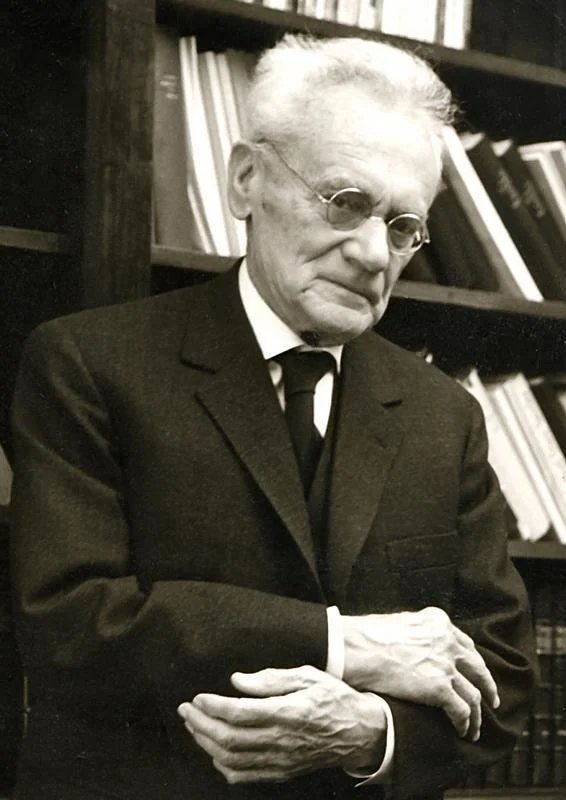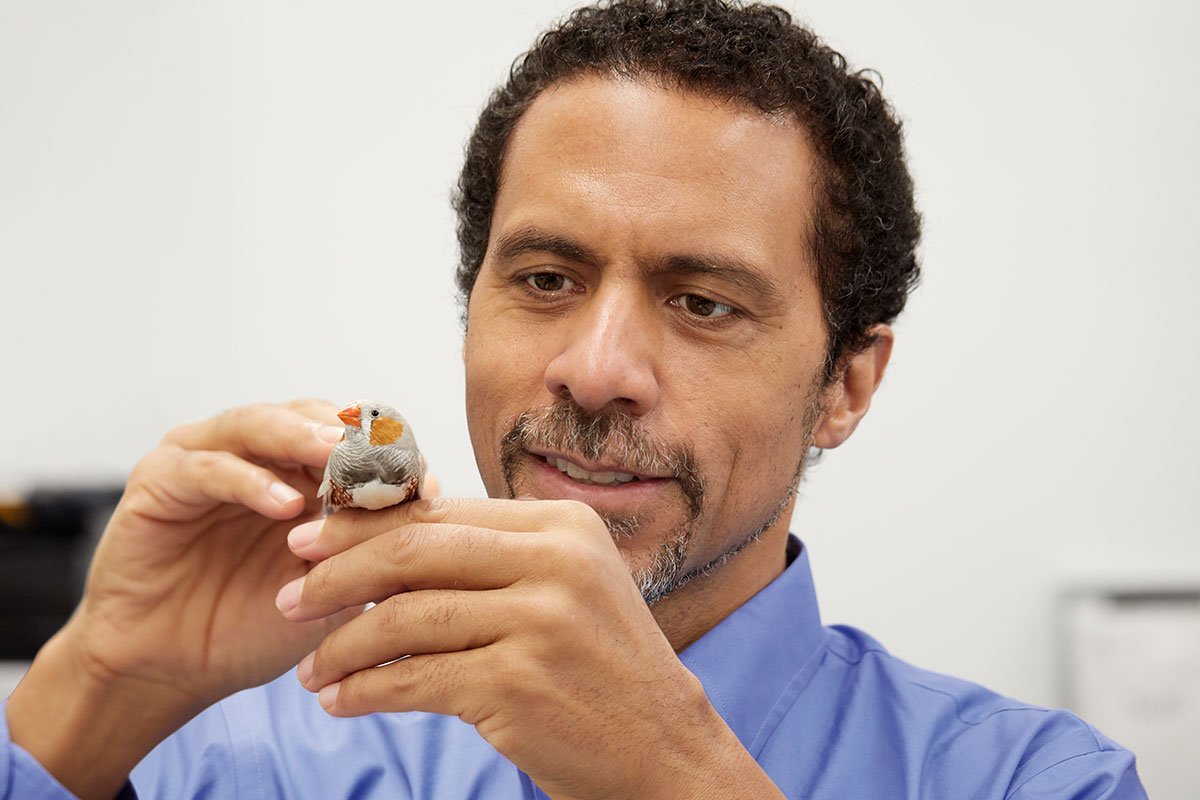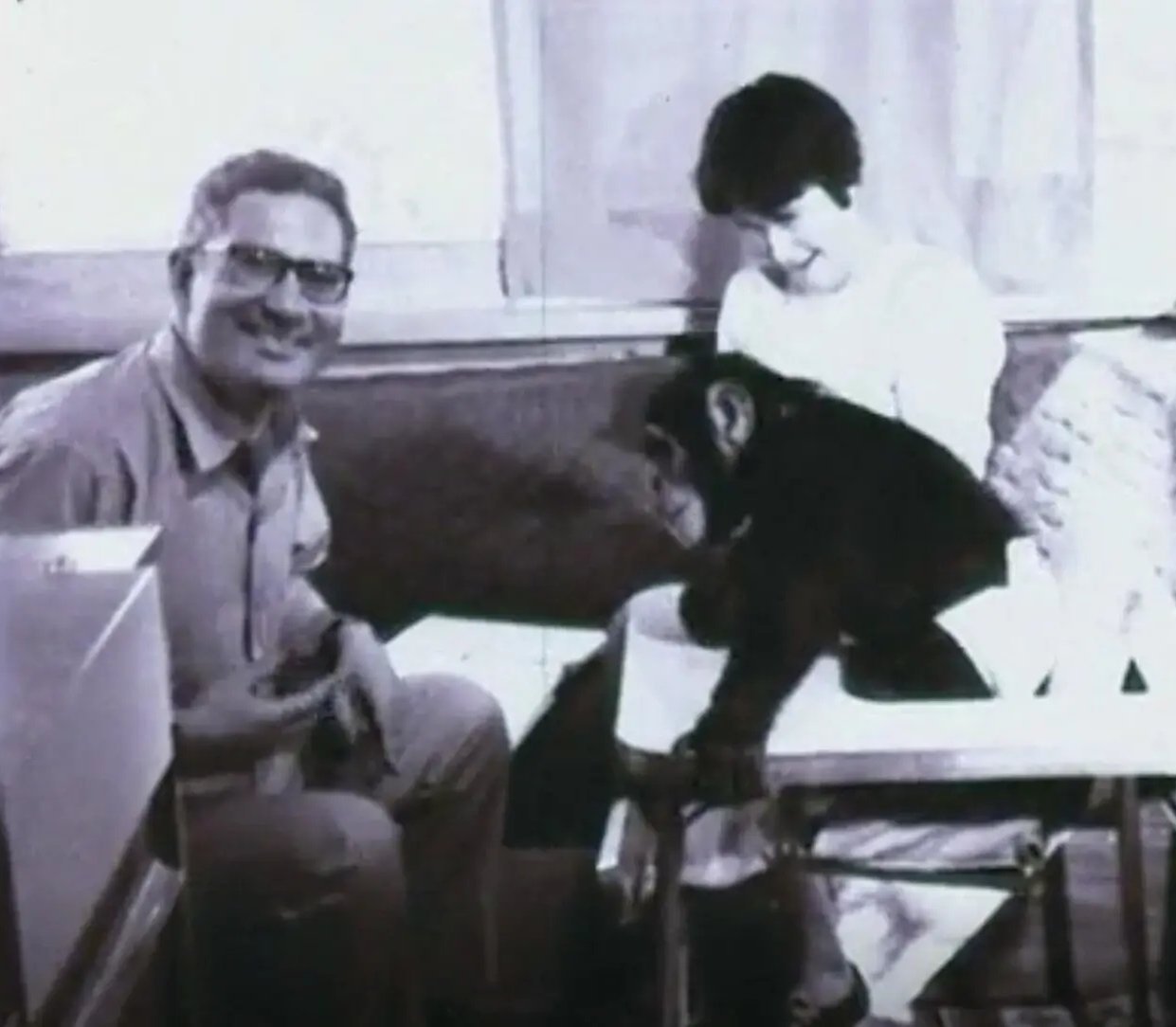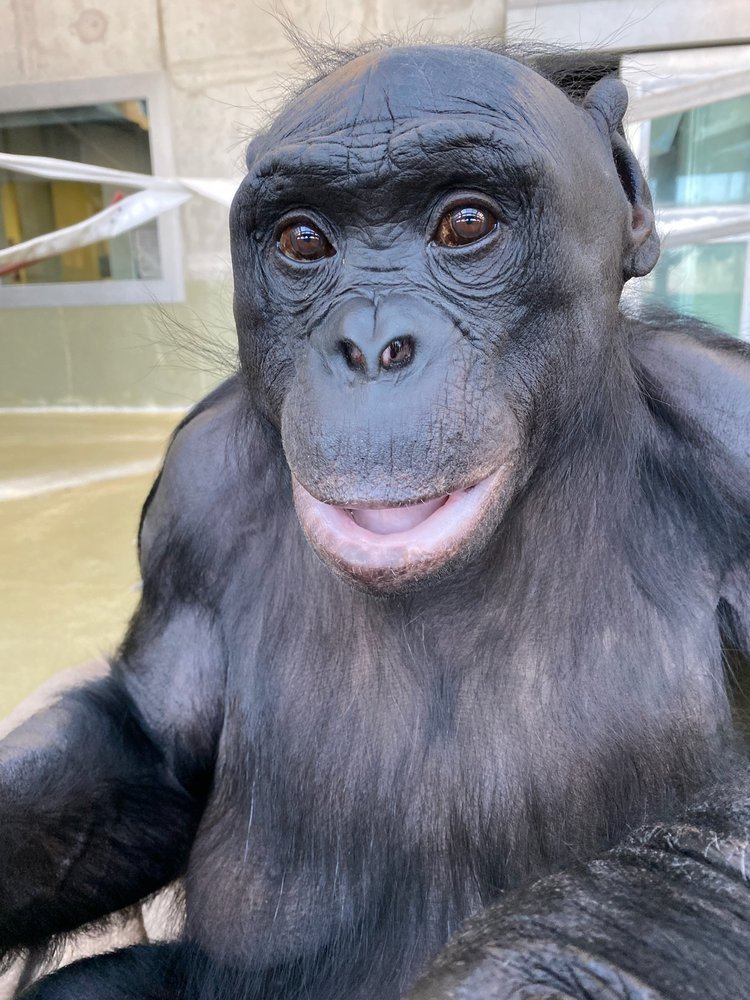In loving memory of Kanzi (1980 - 2025)
•
In loving memory of Kanzi (1980 - 2025) •
Hall of Fame
The Interspecies Internet Hall of Fame acknowledges pioneering individuals and researchers in the field of interspecies communication whose indispensable contributions to animal behaviour, cognition and decoding the communication systems of other species have inspired us and advanced our understanding and appreciation of the minds of other non-human animals.
Pioneers
-

Karl von Frisch
Austrian ethologist
(1886-1982)Von Frisch’s groundbreaking work investigated the sensory perceptions of honey bees and he was one of the first to discover the meaning of the worker bee waggle dance. His theory, described in his 1927 book Aus dem Leben der Bienen (translated into English in 1954 as The Dancing Bees), was disputed by other scientists and subjected to great skepticism at the time. Only much later was it shown to be an accurate theoretical analysis. Von Frisch is credited for having discovered the first evidence of symbolic communication in another species.
-

Donald Redfield Griffin
American zoologist
(1915-2003)Regarded as the father of cognitive ethology, Griffin conducted pioneering research into how animals think. In his seminal book The Question of Animal Awareness (1976), Griffin argued for a evolutionary continuity of consciousness in the living world, much like Darwin had done many years earlier. Griffin suggested that animals were sentient, thinking beings not merely automatons as convention within the scientific community would have it. In his obituary, The New York Times credited Griffin for being "the only reason that animal thinking was given consideration at all."
-

Kenneth Stafford Norris
American marine mammal biologist
(1924-1998)Credited with virtually creating the field of cetacean research, Norris and his colleagues performed groundbreaking research on dolphin echolocation and conducted studies critical to understanding their social structure and behaviour. He was also passionate about animal welfare, having been one of the founders of the Society for the Biology of Marine Mammals who also helped develop the federal Marine Mammal Protection Act of 1972. Norris also carried out research to identify ways to reduce dolphin fatalities caused by tuna-fishing nets.
-

Jane Goodall
English primatologist
(1934-Present)Considered to be the world's foremost expert on chimpanzees, Goodall is best known for her 60-year study of social and family interactions of wild chimpanzees that began when she first went to Gombe Stream National Park in Tanzania in 1960. She is the founder of the Jane Goodall Institute and the Roots & Shoots program, and she has worked extensively on conservation and animal welfare issues. Goodall has served on the board of the Nonhuman Rights Project since its founding in 1996. In April 2002, she was named a UN Messenger of Peace. She is also honorary member of the World Future Council.
-

Roger Payne
American biologist
(1935-2023)Payne began his career studying bats and owls before turning his focus to whales in an effort to link his work with conservation. In 1967, he and his colleague Scott McVay discovered complex songs that humpback whales perform during their breeding season, releasing an LP of recordings in 1970 called Songs of the Humpback Whale. Still the best selling nature sound record of all time, Payne’s album fueled the Save the Whales movement, resulting in the 1972 Marine Mammal Protection Act and inspiring a campaign for a global moratorium on commercial whaling, which was adopted in 1986. Payne is the founder of conservation organization Ocean Alliance.
-

Katy Payne
American zoologist
(1937-Present)Born Kathryn Boynten, Payne studied music and biology in college before spending 15 years researching and recording whale vocalizations with her husband Roger Payne. Following this, she turned her attention to investigating elephants and in 1984, along with ethologist Joyce Poole, she discovered their use of infrasonic calls to communicate with each other over long-range distances. In 1999, Payne published a book of her findings titled Silent Thunder and founded the Elephant Listening Project–a bio-acoustic conservation venture to protect biodiversity and study elephant communication and behaviour.
-

Luis Felipe Baptista
Portugese-Chinese-American ornithologist
(1941-2000)Baptista is considered a leading international expert on bioacoustics, animal behaviour and avian systematics with a focus on bird vocalization, vocal learning and bird dialects. He was an avid teacher with a considerable scientific research practice and academic publishing record, whose work also extended to various conservation and welfare efforts. Local newspapers and magazines in California, where Baptista regularly conducted field work, would refer to him as “The Man Who Speaks Sparrow” and “Maestro of the Bird Symphony.”
-

Iain Douglas-Hamilton
Scottish zoologist
(1942-Present)Recognized as one of the world's foremost authorities on the African elephant, Douglas-Hamilton pioneered the first in-depth scientific study of elephant social behaviour, paving the way for much of our current understanding of elephants and prevailing conservation practices. His conservation work is extensive, including research and public disclosure of the ivory poaching holocaust, advocacy for a global ivory trade ban, and founding Save the Elephants, an organization which seeks to protect elephant environments and encourage tolerant relationships between humans and elephants.
-

Frans de Waal
Dutch-American primatologist
(1948-2024)De Waal’s research centred on primate social behaviour, such as conflict resolution, cooperation, empathy, inequity aversion and food-sharing, often emphasizing a continuity between humans and other great apes. Never shying away from openly and unequivocally attributing emotion and intention to his subjects, his work has done much to inspire the field of primate cognition. De Waal authored numerous popular books, including Chimpanzee Politics (1982), Our Inner Ape (2005), Are We Smart Enough to Know How Smart Animals Are? (2016), and Mama’s Last Hug (2018).
-

Erich Jarvis
American neurobiologist
(1965-Present)Through a combinatian of behavioral, anatomical, electrophysiological, molecular biological, and genomic techniques, Jervis studies the neurobiology of vocal learning. By studying animals such as songbirds, parrots, and hummingbirds, his research has tried to shed light on human language capacity and speech disorders, as well as the similarities between how humans and bird groups learn and transmit sounds. Jarvis is the recipient of numerous awards and honours related to science, engineering and cultural leadership.
Non-Human Primates Studies
-

David Premack
American psychologist
Premack's research centred on the field of comparative cognition between animals and humans. He made significant contributions to this area, notably introducing the concept of Theory of Mind with his colleague Guy Woodruff, which has continued to be a fruitful concept in psychology and neuroscience. Premack also raised questions about his theory of mind and explored symbolic behavior in chimpanzees and investigated their understanding of relations, analogies, and causal inference. He also shifted the focus from language acquisition to symbolic behaviour and introduced the Premack Principle in the context of reinforcement learning, theory of mind, and cognition in human infants.
-

Allen and Beatrix Gardner
American experimental psychologist
Austrian zoologistTogether, the Gardner’s demonstrated language acquisition in chimpanzees and advanced our understanding of learning processes in primates. A few years after their marriage, Allen and Beatrix acquired a 10-month old female chimp named Washoe. Along with a team of researchers, the Gardner’s taught Washoe 250 words in American Sign Language, which she used in novel configurations. Allen and Beatrix replicated their study between 1972 and 1981 with four additional infant chimpanzees named Moja, Pili, Tatu, and Dar. Their findings have inspired an abundance of research in animal cognition over the ensuing years.
-

Roger and Deborah Fouts
American primatologist
American anthropologistRoger and Deborah were former co-founders and co-directors of the Chimpanzee and Human Communication Institute (CHCI), a sanctuary and research centre that advocated for chimpanzee conservation and the promotion of primate intellect. They worked together on the Washoe project, teaching chimpanzees American Sign Language and conducting extensive research on chimpanzee communication and learning. They also played pivotal roles in promoting nonhuman animal legal rights and welfare, campaigning for the ethical treatment of chimpanzees, collaborating with Jane Goodall, and contributing to discourse on animal law, ethics and welfare.
-

Sue Savage-Rumbaugh
American primatologist
Savage-Rumbaugh conducted pioneering interspecies communication research with common and pygmy chimpanzees, investigating their linguistic and cognitive abilities using lexigrams and computer-based keyboards. She was also the first and only scientist to conduct language research with bonobos and helped pioneer the use of a number of new technologies for working with primates, such as the speech synthesis keyboard. Her work on the abilities of nonhuman primates to acquire symbols, comprehend spoken words, decode simple syntactical structures, learn concepts of number and quantity, and perform complex perceptual-motor tasks has helped change the way humans view other members of the primate order. In 2011, she was recognized as one of TIME magazine's 100 Most Influential People in the World.
-

Duane Rumbaugh
American experimental psychologist
Rumbaugh is known for his methodological innovations and research contributions to the study of primate learning and behaviour, pioneering the use of computerized test systems for monkeys which have since become a standard testing paradigm in comparative cognition. Most notably, Rumbaugh directed The LANA Project (1977) in which he studied language and communication with symbol-competent chimpanzees, training them to communicate using a computer-based keyboard and lexigrams. His work demonstrated chimpanzee language learning by documenting their ability to sequence words grammatically and make novel utterances. Dr. Rumbaugh’s long and distinguished career yielded more than 125 published articles and chapters on a wide range of topics within comparative psychology.
-

Francine "Penny" Patterson
American animal psychologist
Beginning in 1979, Penny Patterson conducted research teaching a modified form of American Sign Language, which she calls "Gorilla Sign Language" (or GSL), to a gorilla named Koko. She obtained a bachelor’s degree in a psychology at the University of Illinois at Urbana-Champaign before earning her Ph.D. in 1979 from Stanford University. Her dissertation, Linguistic Capabilities of a Lowland Gorilla , focused on teaching sign language to Koko and Michael, another Lowland Gorilla who died in 2000. Patterson currently serves as the president and research director of nonprofit The Gorilla Foundation. She is also the Editor-in-Chief of the Gorilla journal, an adjunct professor of Psychology at Santa Clara University and a member of the Board of Consultants at the Center for Cross-Cultural Communication in Washington, D.C.
-

H. Lyn Miles
American bio-cultural anthropologist
Miles is known for teaching sign language to a baby orangutan named Chantek using an immersive-participant-observation method similar to how humans are taught during infancy. Over the course of 20 years, she undertook "Project Chantek", a scientific research effort to teach Chantek sign language and human culture, emphasizing the development of cultural processes in his upbringing and using applied anthropological approaches to study interactions between humans and orangutans. Miles investigated both the cognitive aspects of orangutan learning and the insight this may have into the evolution of human symbol systems. She also promoted animal rights and welfare through her work and advocacy efforts.
-

Sally Boysen
American primate researcher
Boysen established the Comparative Cognition Project at the Ohio State University Chimpanzee Center in 1983, where she investigated chimpanzees' cognitive abilities in relation to intelligence, linguistics and neuroscience. Her work has centred on symbolic representation in chimpanzees, focusing on abilities related to counting, reading, object naming, and abstract concept formation, and has advanced our understanding of animal cognitive development and numerical competence. Boysen has also contributed to our understanding of tool use in lowland gorillas, collaborated with researchers in the field of avian studies, and raised awareness about the cognitive capabilities of chimpanzees and their connections to human cognition.
-

Kanzi
World's Most Renowned Bonobo (1981 - 2025)
“Kanzi was an extraordinary individual who revolutionized our understanding of animal cognition and communication. As a young bonobo, researchers were attempting to teach Kanzi’s adoptive mom, Matata, human language. Much to the surprise of the scientists, Kanzi quickly excelled in not only using abstract symbols, but in understanding spoken English. He learned to communicate using a lexigram board with hundreds of symbols, allowing him to express his desires and needs with precision. Kanzi's eagerness to interact with humans, enthusiasm for problem-solving, and love of food made for the fun-loving, motivated, and impactful ape that Kanzi was. Kanzi gifted us with a window into the minds of our closest living relatives, and his lessons about the bonobo species, as well as our own, will continue to live on.”
Avian Studies
-

Irene Pepperberg
American animal cognition scientist
Irene Pepperberg is a scientist with a research focus on animal cognition, language learning in non-human animals, and the comparative study of the cognitive fundamentals of language and communication. She is noted in particular for her pioneering studies of parrot cognition and vocal behaviour and was one of the first to work on language learning in nonhuman animals. Pepperberg worked with a single grey parrot named Alex, reporting his acquisition and sophisticated use of a large vocabulary, his ability to understand labels describing objects, colours, shapes and material, and his capacity to flexibility differentiate between meaning a syntax. Pepperberg also serves on the Advisory Council of METI (Messaging Extraterrestrial Intelligence) and is active in wildlife conservation.
-

Peter Robert Marler
British-American ethologist
Marler is an internationally recognized researcher known for his work on animal sign communication and the science of bird song. He has contributed significantly to understanding how songbirds acquire song and pioneered a semiotic approach to animal communication, revolutionizing our understanding of the subject. Marler has also studied communication development in primates, collaborating with other prominent scientists such as Jane Goodall, Dorothy Cheney and Robert Seyfarth. His work shed light on the importance of of memory, learning, auditory and social experience, and the interactions between environmental influences and individual predispositions. Marler’s research has impacted studies of development in behaviour, linguistics, and psychology and greatly informed our understanding of memory and learning in animals.
-

Fernando Nottebohm
Argentinian-American neuroscientist
In 1996, Nottebohm received his PhD in zoology from the University of California, Berkeley, working with renowned ethologist and zoosemioetician Peter Robert Marler. He is best known for his work on neurogenesis in the adult vertebrate brain and his research has also contributed significantly to various areas of avian cognition and behaviour, including avian neurobiology, brain plasticity in songbirds, the evolution of avian communication, and the neural intricacies of avian vocal learning. Nottebohm’s work has done much to challenge established beliefs in the field of brain science, advanced melodic conversation research, and enhanced our understanding of the neurology of avian vocal learning. He is the recipient of numerous honors and awards related to neuroscience, ornithology, and medical science.
Marine Mammal Studies
-

John C. Lilly
American neuroscientist
Lilly was a controversial cultural figure, physician, neuroscientist, psychoanalyst, psychonaut, philosopher, writer, and inventor who pioneered research into dolphin communication and cognition, specifically dolphin brain structure and communicative abilities. From the mid-1950s until the 1980s he undertook a range of idiosyncratic projects related to dolphin cognition and communication, including: research discoveries about dolphin anatomy, brain structure, behaviour and communication; attempting to teach dolphins a computer-synthesised language; building spaces in his labs for dolphin–human cohabitation and communication; and publishing on dolphins’ abilities to mimic human speech patterns.
-

Louis M. Herman
American marine biologist
Herman is best known for his research into sensory perception, animal language and echolocation, particularly the sensory abilities and cognition of dolphins. In 1970 he founded the Kewalo Basin Marine Mammal Laboratory in Honolulu, where he studied bottlenose dolphin perception, cognition, and communication. Herman published on a range of topics related to dolphin intelligence, including language and sentence comprehension, acoustic and behavioural mimicry, memory, monitoring and reporting of self behaviours, object categorization, and comprehension of symbols, pointing gestures, and gaze. In 1993, he co-founded The Dolphin Institute, a non-profit corporation dedicated to dolphins and whales through education, research, and conservation.
-

Diana Reiss
American comparative psychologist
In 2001, Reiss and her colleague Lori Marino demonstrated that bottlenose dolphins pass the mirror self-recognition test, suggesting physiological and cognitive self-awareness. Her follow up study with Frans de Waal and Joshua Plotnik showed that Asian elephants also possess this ability. Reiss has conducted research on the evolution of intelligence and communication in marine animals, done pioneering work developing underwater keyboards to study dolphin communication, and authored the book The Dolphin in the Mirror. She is actively involved in rescuing and rehabilitating stranded marine mammals, advocates for the protection of dolphins in the tuna-fishing industry, and works to end the killing of dolphins in drive hunts in Japan.
-

Denise L. Herzing
American dolphin communication researcher
Herzing is the founder and research director of the Wild Dolphin Project, an organization funding the study of behaviour and communication of wild Atlantic spotted dolphins. She has pioneered non-invasive approaches to studying free-ranging dolphins in their natural setting and developed wearable underwater computer technology for two-way human-to-dolphin communication. Herzing has also worked to produce a new camera/hydrophone system that assesses the directionality of sound in water, enabling researchers to identify and match dolphins and their sounds on a recording. She has also published a method for quantifying nonhuman intelligence which can be applied to dolphins as well as other animals.
